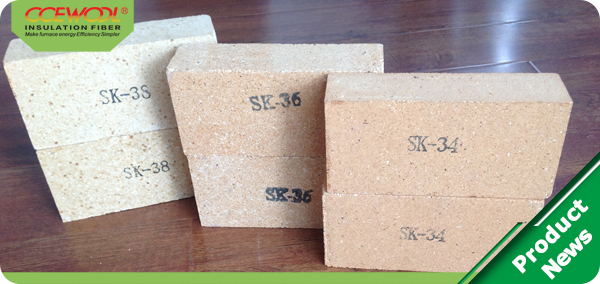
Dec. 27, 2016
Last week we talked about the principle of incinerators and the classification of refractory bricks. This week we are going to introduce Corrosion conditions and physical and chemical indexes of Incinerator used refractory brick in various parts. We hope this will be helpful.

The corrosion condition of Incinerator used incinerator used refractory brick is as follows
1) H0, H1 Incinerator tank bottom structure of the furnace
The sodium salt is attached to the quench tank around the furnace body, with the role of the protection of refractory bricks. But too much attachment will increase the load carrying capacity of the quench tank, which is not conducive to the equipment body. Therefore, during the overhaul, will be appropriate to remove the sodium salt on the quench tank.
2) H2 H3 H4 the composition of furnace body straight section
There was a clear crack in the incinerator used refractory bricks in the straight section, indicating that adhesion between adjacent refractory brick mortar with shedding phenomenon. The shedding motor not only weakens the adhesion between refractory bricks, and furnace brick gap will further aggravate the corrosion of refractory brick.
3) The furnace body structure between H5 and H6
The incinerator used refractory brick in this section is the most obvious corrosion part. The refractory brick at the nozzle is measured at the thinnest of only 20mm (the original thickness of 230mm). Therefore, when replacing refractory bricks for incinerators, it is possible to shorten the length of nozzles outside the furnace body and extend the nozzle length of the furnace by about 3-5 cm to solve the problem of wastewater atomization.
Physical and chemical indicators of Incinerator used refractory brick:
1) Al2O3 as a-Al2O3 crystal structure in Al2O3 firebrick, also known as corundum structure. Characterized with compact structure and chemical resistance. Also belongs to inert oxide, almost no chemical reaction with acid-base.
2) SiO2 siliceous refractory material characterized with acid corrosion resistant, Belong to weak acid refractory material. At high temperature, the furnace reductive gases penetrate into the refractory bricks will react with the SiO2.
3) ZrO2 zirconia fiber is a kind of polycrystalline refractory fiber material. With good chemical stability, excellent oxidation resistance, small thermal conductivity, shock resistance, sinter ability and so on.
4) General refractory material contains Fe2O3. At high temperature, the reaction between reductive gas CO and H2. FeO will erode Al2O3 protective film, Fe (Cr, Al) 2O4 spinel was produced at the critical point of furnace brick, weaken the corrosion resistance of furnace brick, so it is essential that strictly control the content of Fe2O3.
CCEWOOL has over 40 years experience in the production of incinerator used incinerator used refractory brick. Manufactured according to ASTM & JIS standards. According to different applications and industry sectors to provide a full range of fire-resistant insulation materials and solutions.
